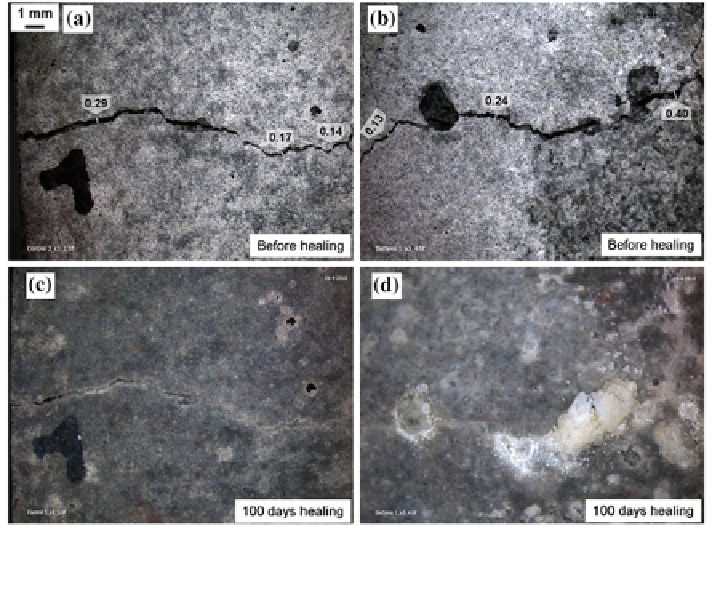Environmental Engineering Reference
In-Depth Information
Fig. 15.3 a Stereomicroscopic images of crack-healing process in control mortar specimen
before and b in biochemical agent-based specimen before, and c after 100 days healing, and
d after 100 days healing (Wiktor and Jonkers
2011
)
In addition, as the metabolically active bacteria consume oxygen, the healing agent
may act as an oxygen diffusion barrier protecting the steel reinforcement against
corrosion. So far, bacteria have never been used to remove oxygen from the
concrete matrix to inhibit reinforcement corrosion, and further studies are needed
to quantify this potentially additional beneficial process. While in this study the
enhanced self-healing capacity of bacteria-based concrete has been quantified,
several other characteristics such as long-term (years) durability and cost effi-
ciency of this novel type of concrete need to be resolved before practical appli-
cation can be considered. Anticipated potential advantages of this bacteria-based
concrete are presumably primarily in reduction of maintenance and repair costs
and extension of the service life of concrete constructions (Wiktor and Jonkers
2011
).
Bacteria and polyurethane (PU) prepolymer were applied internally (to heal
cracks from the inside). PU foam should form in the crack automatically when
cracking occurs and bacteria are incorporated inside the foam at the same time.
This study was to investigate the potential use of silica gel or polyurethane-
immobilized bacteria to bring about self-healing concrete. Bacteria can still con-
serve ureolytic activity and carbonatogenesis activity after being immobilized into
silica
gel
and
polyurethane
foam.
TGA
results
proved
the
formation
of

Search WWH ::

Custom Search